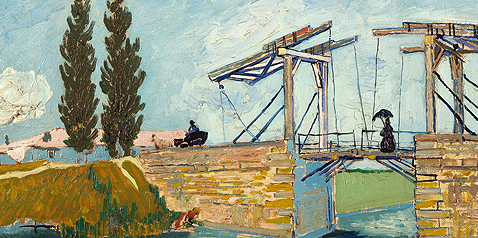
VINCENT VAN GOGH
After unsuccessfully trying his hand at art dealing, teaching and preaching, Vincent van Gogh (Zundert 1853–1890 Auvers-sur-Oise) turned to painting; for the whole of his life, though, he was dependent on the financial support of his brother Theo, who worked for an art dealer.
In his early period, which is also known as van Gogh’s ‘dark period’, the main theme of his paintings was the modest lives of the lower classes. In 1886 he went to Paris, where he came into contact with the Impressionists; during this phase he abandoned his gloomy colours in favour of an Impressionist style of painting in brighter tones. In 1888 van Gogh settled in Arles, where for a time he worked closely together with Paul Gauguin, an artistic partnership that ended in a violent quarrel. In Arles van Gogh increasingly developed a totally individual view of art and a very personal style, characterized by enhanced use of colour.
Van Gogh suffered from nervous breakdowns and in 1889 had himself admitted to a mental hospital in Saint-Rémy; at the end of July the following year he took his own life in Auvers-sur-Oise.
Van Gogh, one of the leading masters of Post-impressionism, was the first artist to use the deformation of form as a compositional device to increase expressive power. Through his œuvre, he can be seen as a pioneer of Modernism, for after all he was probably the leading role model for Fauves and Expressionists alike.


